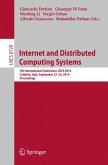The Web is undergoing revolutionary changes its second generation is emerging. The key player in the new generation is not HTML but XML (this is why it is also known as "the XML-based Web"). If the appearance of web pages is a major concern in the first generation, then the meaning (or semantics) of information on the Web is the focus of the second generation, which is why it is also called "the Semantic Web." The new edition of the pioneering monograph on Visualising the Semantic Web has undergone a number of changes in order to reflect recent research results, web standards, developments and trends. In this new edition, 2 chapters have been removed, 4 new chapters have been added and the 10 remaining chapters have been completely revised and updated.
From the reviews of the second edition:
"Extensible Markup Language (XML) is the basis of the semantic Web's metadata. ... The production quality of the book is quite high, featuring high-gloss paper and containing numerous intriguing color screen shots of visualization outputs ... . the book does a good job of providing an understanding of the semantic web, presenting its vision and an overview of research into its visualization." (A. E. Salwin, Computing Reviews, December, 2006)
"Extensible Markup Language (XML) is the basis of the semantic Web's metadata. ... The production quality of the book is quite high, featuring high-gloss paper and containing numerous intriguing color screen shots of visualization outputs ... . the book does a good job of providing an understanding of the semantic web, presenting its vision and an overview of research into its visualization." (A. E. Salwin, Computing Reviews, December, 2006)








